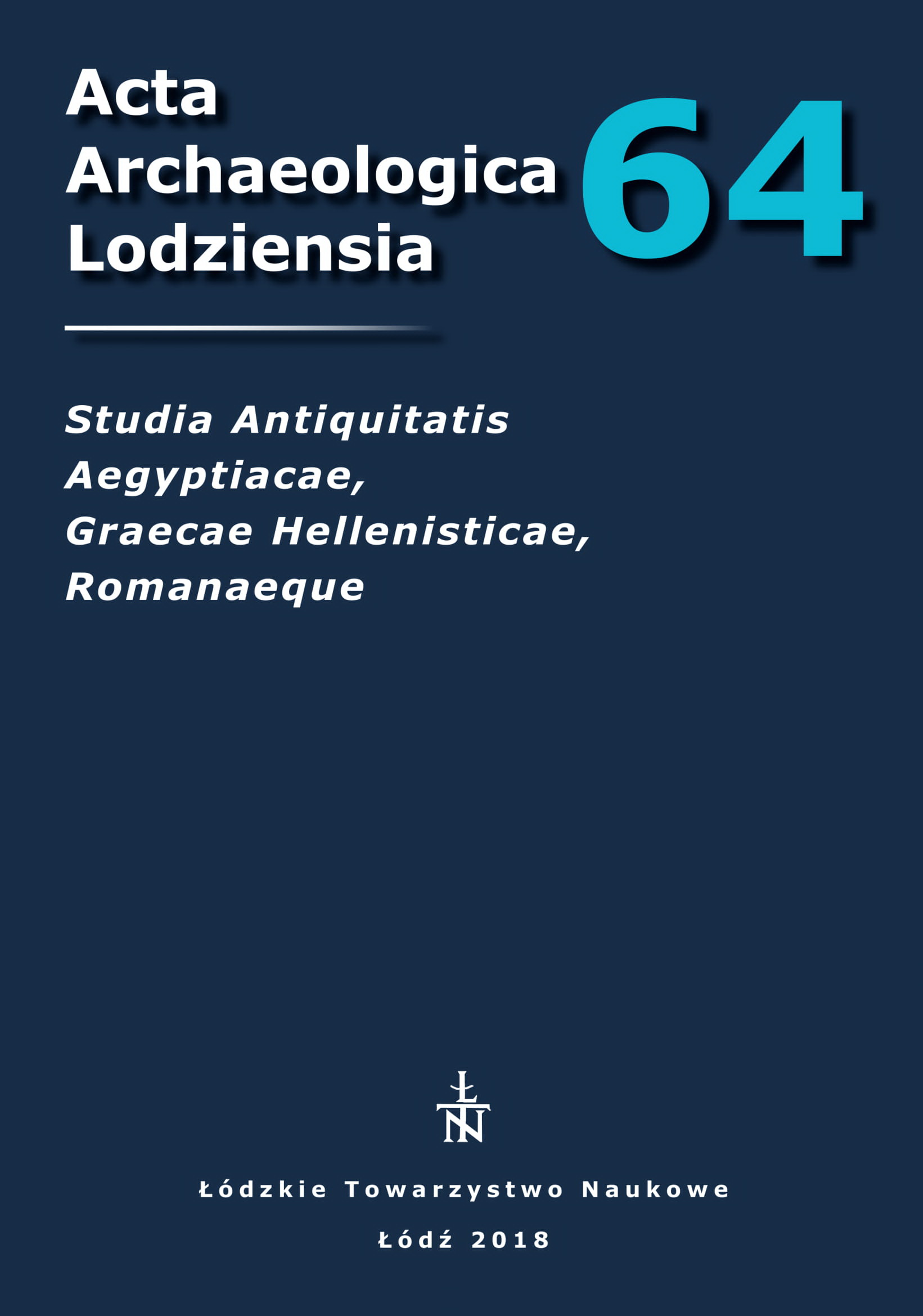Macellum w Leptis Magna w kontekście urbanistycznym i społecznym miasta
The Macellum in Leptis Magna in the Urban and Social Context of the City
---
Author(s): Jakub MosiejczykSubject(s): Ancient World
Published by: Łódzkie Towarzystwo Naukowe
Keywords: Leptis Magna; macellum; public Roman architecture; ancient urbanism
Summary/Abstract: The article analyses the architecture of the macellum at Leptis Magna Markets built on a monumental scale in the Roman urban landscape were typified by a well thought-out spatial organization. As a centre of food redistribution, and a primary place of trade in alimentary products, they constituted the focal point of the everyday lives of the inhabitants of the Empire. Thus, their form and dècor reflected the city’s social system, attesting to the economic relations of its inhabitants. Often they were a means for spreading concepts of state, as is evidenced by the epigraphic monuments discussed in the article, and the location of the facility in its broader urban context. The macellum in Leptis Magna stands out from the other buildings in the city not only on account of its enormity, but by the use of an atypical design. The object is a quadriporticus with two tholoi located in the centre of a paved square. As a rule, the trading booths were set up in a circle; in this case they took on an orthogonal form. Seven chronological phases can be distinguished in this complex structure. The successive stages from the founding of the market during the reign of Augustus to the end of its functioning in late antiquity are discussed. The numerous restorations of the facility, employing multi-coloured marbles, corresponding with trends visible in the neighbouring public buildings, will be dealt with. The macellum evolved as the urban landscape developed: the body of the building object was adapted in line with the realignment of the street grid and the development of the spatial use of the centre, which is a manifestation of the economic and social importance of the object. Equally important in reading the meaning of the buildings are the stone monuments in the form of decorated store counters. Through their position the economic relationship between the tenants of the various stands can be inferred. As a unique find was a measuring table, which has been interpreted as a handy measurement converter. Carved on it were the sizes and subdivisions of the Punic cubit, the Roman-Attic foot and the Ptolemaic cubit (meh suten). This is explained by the cosmopolitan character of the city, where citizens brought up in Roman, Punic and Greek traditions lived alongside one another, thereby underlining the position of Leptis as the centre for inter-regional trade, lying on the route between the East and West of the Mediterranean.
Journal: Acta Archaeologica Lodziensia
- Issue Year: 2018
- Issue No: 64
- Page Range: 69-76
- Page Count: 8
- Language: Polish

